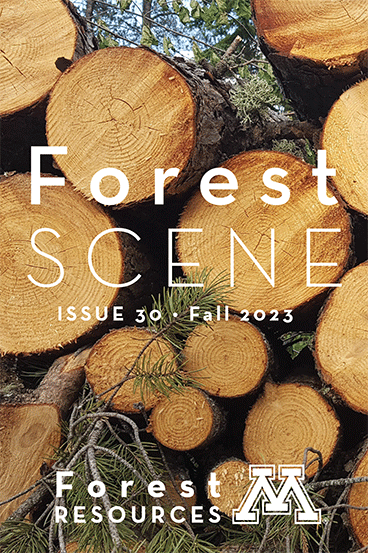As Minnesota’s climate changes, forests will face pressures from tree diseases and pests, heavier and more frequent rainfalls, warmer temperatures, and prolonged drought. Those are scary scenarios – but we can take action now to help mitigate them. By planting species that are predicted to adapt well to these changes, we can help foster healthy, resilient woodlands that will thrive not just this year, but 50 to 100 years from now.
To help with this effort, University of Minnesota Extension forestry experts have compiled regional lists of climate-ready trees and plants for woodland stewards across Minnesota.
Why forests need help adapting to a changing climate
Climate change will impact various tree and plant species differently. Many trees, plants, and wildlife in southern Minnesota have native ranges much further south, and therefore may be naturally more resilient to a warmer ecosystem. But the northern conifer forests are at the very southern edge of their native range, which extends far into Canada. As Minnesota gets warmer those forests will continue to creep north and out of Minnesota.
Recommended trees for climate-ready woodlands
These recommended climate-ready planting lists can help landowners in different regions of Minnesota make informed decisions that will help whole forest ecosystems adapt. All species on these lists meet the following criteria:
Native to Minnesota or nearby in the Eastern Deciduous Forest.
Low risk of mortality from pests and disease.
Beneficial to wildlife, specifically charismatic microfauna such as butterflies, bees, fireflies, birds and bats.
Climate-ready, with response data indicating they are well-suited for the area’s projected climate.
How to use the lists
Because Minnesota is an ecologically diverse state, the recommended climate-ready planting lists are divided into 11 regions with characteristic soils, precipitation patterns, topography, and natural vegetation. Users can visit the web page and select the region that aligns with their location to access planting recommendations for their area. Sortable, print-friendly versions are available to download.
For those interested in rewilding their forest understory, Extension forestry experts have also created lists of native plant species for each region. These plants are integral members of the forest ecosystem, providing benefits such as habitat and food for insects, birds, and small mammals. While many of the plants on these lists are available at nurseries that specialize in native plants, you may also be able to find them already growing in your woods!
Remember to consult a forester
Extension recommends speaking with a local natural resource professional before undertaking any significant planting, especially if you’re considering species that are not currently found in your region. That’s because many species on these lists are indicated as having migration potential. This means that they are not currently found in the region for which they are being recommended, but are predicted to do well in that area’s future climate. These new species will increase forest diversity, which can help create a resilient ecosystem and fill important ecological niches. As with any forestry decision, we recommend consulting a local natural resource professional before undertaking any significant planting.
This story is adapted from an article by UMN Extension forestry experts. Read the original article.

The Forest Scene newsletter is published biannually in the spring and fall, featuring stories and updates from the Department of Forest Resources. Readers can download issue 30 of Forest Scene as an interactive PDF that is fully tagged and compatible with most screen readers, or read the individual stories here in a web-based format:
- Department Message from Kristen Nelson
- New Faculty: Alicia Coleman and Irene De Pellegrin Llorente
- Donor Alum Recognition: Dr. Narinder Dhir
- Highlights from the 2023 SAF National Convention
- Staff Retirement: Colleen O'Connor
- Graduate Research: Boosting Eastern Hemlock
- New Research: Survivor Elms Key to Revitalizing Minnesota's Elm Population
- Field Session Snapshots
